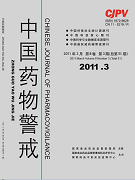|
|
Experimental Study on Chronic Toxicity in Rats Caused by Different Components of Rhizoma Menispermi
ZHANG Li-mei, YANG Qian, QIAN Xiao-lu, LUO Dong, SUN Rong
2011, 8(3):
129-134.
Objective The obvious toxical symptoms and signs, the toxic damage extents and reversibility were observed in rats caused by different components from Rhizoma Menispermi. Methods The 140 rats were divided into seven groups such as normal group, water extract and alcohol extract of high, medium and low dose. The general conditions including the bodyweight, diet and behavior were observed, the blood routine, the biochemical indicators, organ/bodyweight rate, the important organs such as heart, liver, spleen, lung, kidney, brain and et al, and pathological changes were detected after water extract and alcohol extract administrated. The changes were observed during the recovery period. Results The Wistar rat’s weight, diet and drinking were decreased; the activity of ALT, AST, ALP in serum were increased; the liver weight and volume ratio was increased after given water extract and the liver, kidney weight and volume ratio were increased after given alcohol extract from Rhizoma Menispermi to Wistar rats by intragastric for 27 and 33 days. The damage of liver and kidney toxicity in rats show an obvious dosage relationship and after the convalescence, the partial lesions were irreversible. Conclusion The main chronic toxical damage is liver and kidney caused by water extract and alcohol extract of Rhizoma Menispermi especially the alcohol extract, and part of the lesions were irreversible.
References |
Related Articles |
Metrics
|
